The Modern Wheel System
“Test these wheels please.” I get that a lot. How exactly? I ride them and then I use them the way that you would use them. I mount tires, inflate them, dismount tires, change the freehub bodies, look at the guts of the hubs and so on. All the stuff you would would likely do in the course of ownership. Then, I pass the wheels around to folks who I know will beat the living jeebus out of them in ways I’m not able.
And just like you, I don’t take the wheels to the wind tunnel. My testing is confined to figuring out if the wheels remain true and round, spokes don’t pop and so on. But that’s a pretty low bar. Wheels are a lot better today than they were when I began racing. If a wheel can’t perform these tasks well; it fails a test 95 percent of wheels pass today; well…
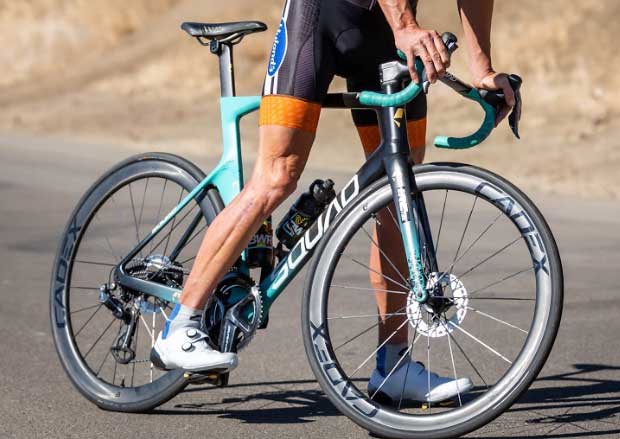
What you’re reading is, nevertheless, my “test” of these wheels and, yes, the wheels perform the functions. In fact, they over-perform because – perhaps to the chagrin of the folks at CADEX – I thought I’d see if this aero road wheel held up to some challenging gravel riding, and it does. This doesn’t surprise me because of how the wheel is designed and I’ve been writing about that for a couple of months now. It has been my opinion that with the advent of disc brakes; because aero is a virtue in everything (even gravel; look at what 3T’s doing); because wheels are strong; and because the advent of hookless makes wheels really strong; wheels-by-use-case is less a *thing*. The wheels you see below are road wheels but, really? Why not road; tri wheels; gravel wheels? The distinctions keep shrinking.
But there’s something a little more going on here. Is this the wheel of the future? When you make a wheel with a hookless bead, you can make the wheel using processes that increase the strength of the sidewall. You can also make the sidewall thicker. This makes the wheel impervious to road hazards. “But this is my road wheel,” you might say. “It’s not a gravel wheel, so I don’t need it to be that strong.” Yes and no.
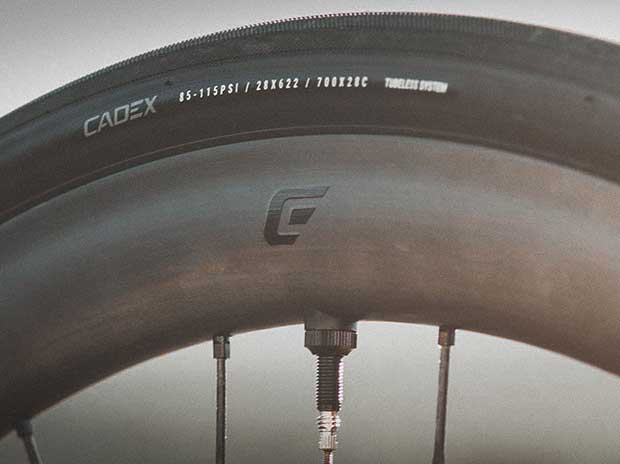
A week of gravel riding is simply two years of road riding, as regards the insults to the wheel. Curbs, potholes and bad pavement; flat tires; and the combination thereof (potholes that cause flat tires) are more rare on the road, but it only takes one such episode to crater a wheel that won’t stand up to gravel conditions. And then a thread is started on our Reader Forum because customer service didn’t give our member the satisfaction to which he felt entitled for his broken wheel.
Yes, tubeless appears to roll faster than tubed, and that’s why so many top triathletes are switching. But let’s go a little further with this, because this isn’t simply about rolling resistance and durability. The bead hook strangles the tire, and that’s fine, because clincher tires are designed to be strangled. Below is the stock tire on the stock wheel on the build of the new Canyon Speedmax CF SLX 8 Disc Di2just introduced that I’m testing now. Absolutely nothing wrong with that wheel and tire combo. Here it is:
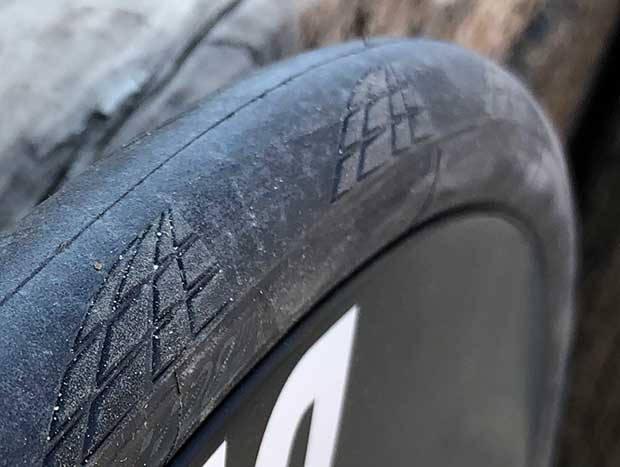
The bead hook is a safety feature that keeps the tire on the rim, and has been necessary for two reasons: 1) There has been no published standard by an august standards body guiding tire makers on what tires to make for hookless beads; 2) Road tires are ridden at pressures too high for hookless beads to be practical. But this has changed. Now there is a standard. And, wider inner bead diameters combined with a trend toward wider tires has lowered the air pressure we’re all riding, even for road and tri.
So, no more tire strangling needed. Imagining tightening your belt two extra holes, just to make double dang sure your pants don’t fall down. If you were to look at how your body reacts, you’ve got rolls of something (couldn’t be fat, could it?) above that overtight belt. Likewise your tire. This creates figure 8 shape or, at least, a shape certainly not without a significant break between the rim and the widest part of the tire (image above). A tire on a hookless bead – if it’s made for that bead – isn’t strangled, and if you look at a tire/wheel system made for hookless you’ll see a lot clean transition from wheel to tire. Here’s the way the stock CADEX tire looks on the CADEX wheels I’m writing about.
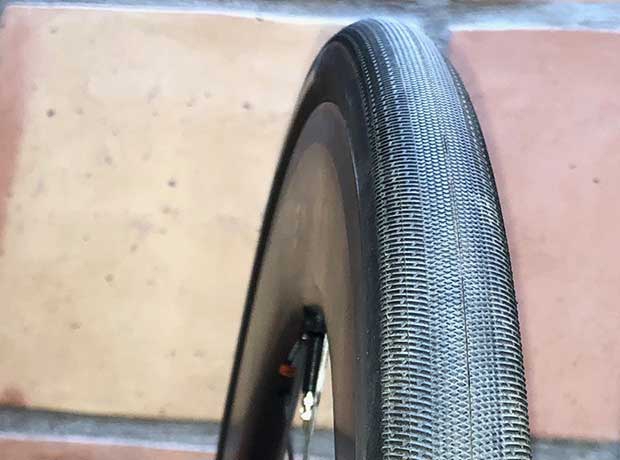
The differences in the images I present above may be obvious. If so, point taken. This is, I guess, my point, when I write to you about the relative benefits of the tests you read like the one I’m writing here. I'm writing below about what this wheel is today. But there’s also what this wheel might be (for example, as more tires are developed for it). I remember when we all found out several years ago that the Continental 4000 was aero; who knew a tire could be aero? My instinct tells me that the possibilities granted wheel system designers through a hookless paradigm are a lot more potentially impactful but until I see graphs with different colored parabolas, you and I won’t know where we stand.
The key to why this all works is “fitment,” and this is a word you hear a lot around tire people. If you have a standard to which tire companies can design, the tires and the rims fit each other snugly. This is why there’s a window of opportunity right now for companies like CADEX – and for that matter ENVE and Zipp – because they have jumped into the tire game. I would say they’re a bit ambivalent, because they want tire companies to make product for their wheels, so, brands like Zipp haven’t pushed their tires too hard on the market. (I think CADEX is a little more lean-forward in its tire ambitions.)
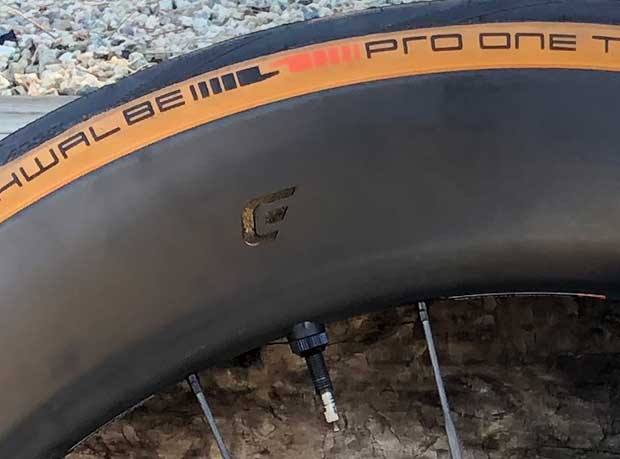
The one tire company that has manufactured to the new hookless standard is Schwalbe, and I thought it would be interesting to show you a really clean, strong, well-made hookless wheel along with what is almost certainly the fastest rolling tire today that’s made for the hookless standard. To be clear, a tire made to this standard works fine on wheels with bead hooks, just, the reverse is not true. So, a Conti 5000 TLE is not made for this CADEX wheel and Conti will tell you so. Likewise Vittoria’s Corsa Speed TL. I’d be shocked if these tires brands aren’t selling tires to the hookless standard within a year, but they’re not selling any such tires now. The other tire that rolls in the neighborhood of those tires is the Schwalbe Pro One TT, shown above on a CADEX 65mm wheel on that aforementioned Canyon Speedmax.
CADEX’s own branded tires are of course made for hookless, and I’ve written a bit about this system recently – about how they just don’t leak down at all, even before sealant’s inside. It’s fitment to the extreme with CADEX’s wheel/tire, and a bit of extra stiffness in the beads of the tires. Your car tires don’t leak down for the same reason. But again, this is all pretty new, and I haven’t seen independent – or any – rolling resistance tests on CADEX’s tires.
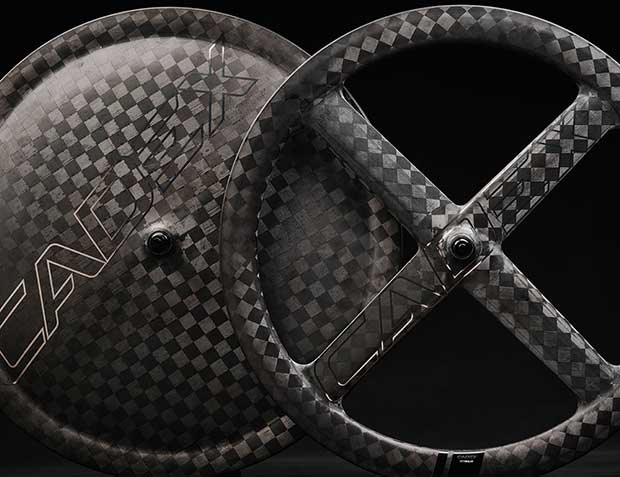
There are wheels CADEX makes that won’t span the variety of use cases, like these above. I don’t have these – haven’t tested or even seen them in the flesh. But I note that with all these CADEX aero wheels, whether for road, tri or TT, two versions are made: tubular (sew up); and hookless tubeless. Not hooked tubeless and not even standard clincher (hooked rim with a tube inside). It’s like these guys have recognized the two very fast ways a bike can be ridden in 2025, and they’re making both those versions in 2020, omitting the way the other 90% of us all ride bikes now (what most of us are riding now is the fastest way to ride a bike in 2015).
Back to the wheels. I look for stuff, like, possible points of stress in the spoke heads or nipples. The number and size of pawls in the cassette assemblies. I have PTSD over wheel failures, especially when the failures occur at inconvenient times, as in during the time Lance-the-kid (pre-bike-racing) was way ahead in a triathlon national championship on our bike, and his front wheel disintegrated underneath him (on a wheel we supplied him). That tends to cause one to be extra picky about equipment.
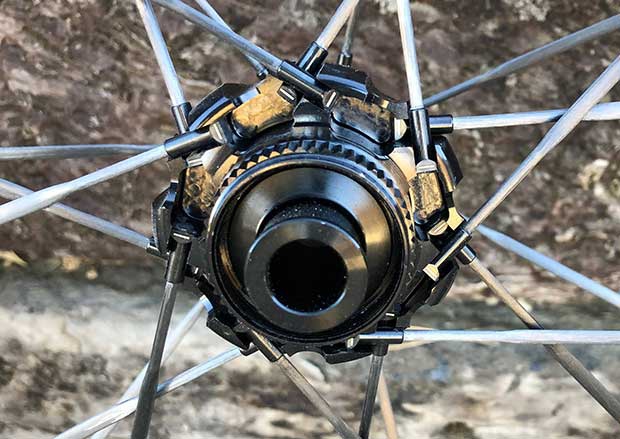
A lot has been learned in the 30 years since that happened but even allowing for modern advancements the CADEX hubs and spokes are impressively done. I have all the end caps for quick-release and thru axle, and a couple of different driver bodies. I pulled everything apart and put it back together again, with some trepidation over whether I had fatally screwed the rear hub, but to my mild surprise it all went back together like a bunch of Legos, and the hub worked like a champ.
Now, these wheels are really expensive. $3,200 for a front & rear combo or $3,400 depending on whether you want a pair of 42mm wheels or 65mm wheels (of course you can get one of each). And that aero wheelset, the rear disc and the 4 spoke? $4,300 for the set. And, look, one of the features of hookless is that the process is easier for manufacturers, so, the cost should come down apples-to-apples.
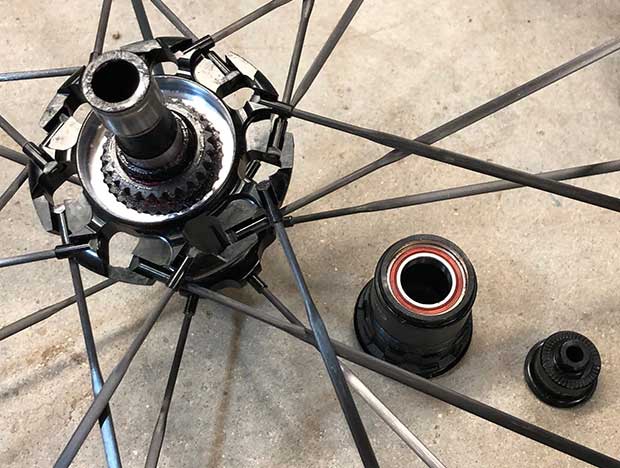
CADEX is a part of the Giant family of brands, and my defense of the price of these wheels is that this feels like the sort of moonshot Giant engaged in during the 1990s with Mike Burrows (designer of Chris Boardman’s Olympic superbike). When Giant wants to take the industry up a notch, it can transform from a value-driven brand to a brand that’s heavily performance oriented. The result of the Burrows era which included bikes for the ONCE team sponsored by Giant at the time, was the TCR road bike, and the marriage of Burrows imagination and Giant’s engineering and manufacturing was like a catapult for the brand.
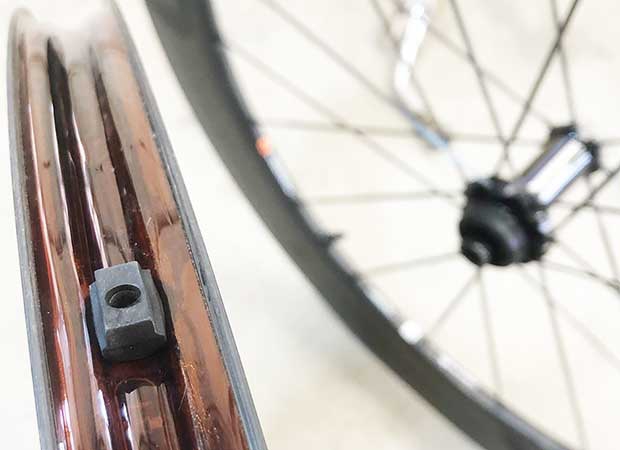
I believe that’s what we’re seeing now. There are bike brands that just have a house wheel brand: Specialized has Roval; Trek has Bontrager. Not to throw any shade on these fine wheel brands, but I get a sense this is more than simply a strategic decision to control cost, availability and compatibility for the complete bikes you make. Before I get too far over my skis in effusive praise, it’s also the other thing. CADEX makes saddles too and they'll get spec on Giant's bikes. So, yes, there's a close relationship between the brands. Maybe two distinct but cooperative brands, like Ergon and Canyon, or Santa Cruz and Reserve, is a better analogy. In any case, the CADEX product decisions made were dynamic. A hookless bead 4-spoke is right up there with, Let’s feed mayonnaise to the tuna.
This is a fun brand; distinct from the typical wheel brand; and as they say nowadays, watch this space. More on CADEX.


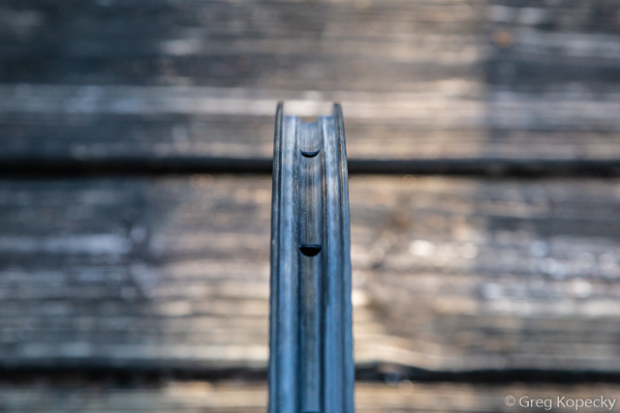
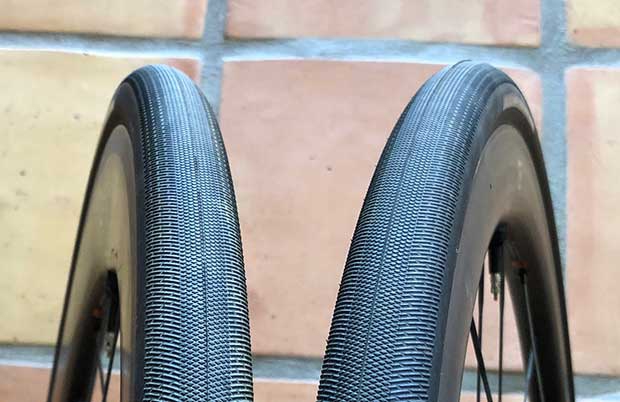
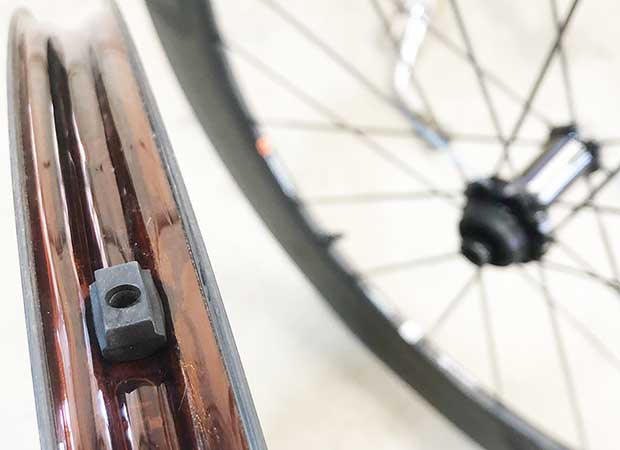
Start the discussion at slowtwitch.northend.network